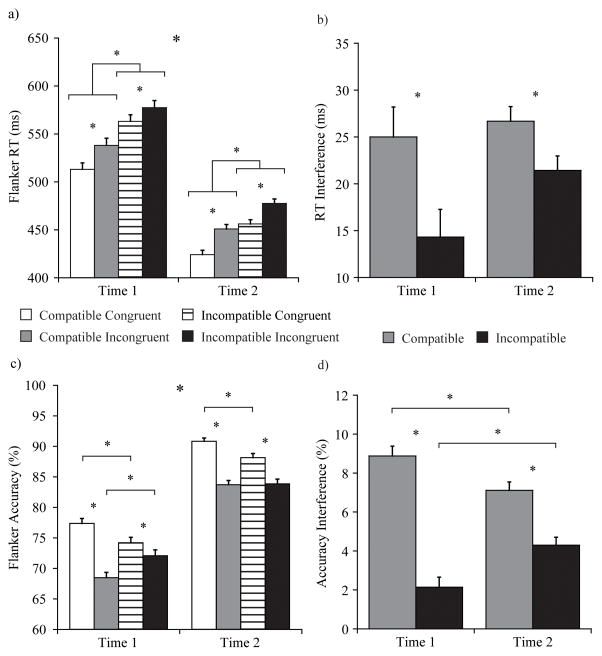Figure 1.
a) Despite overall shorter RT at T2, similar trends were observed at each time point such that congruent trials resulted in shorter RT compared to incongruent trials in both compatibility conditions, and RT was shorter overall in the compatible condition. b) RT interference (incongruent - congruent RT) was greater in the compatible compared to the incompatible condition at both time points. c) Overall accuracy was higher at T2, yet similar trends were witnessed at each time point such that congruent trials resulted in greater accuracy compared to incongruent trials for each compatibility condition. However, congruent trial accuracy decreased in the incompatible (vs. compatible) condition at both time points, whereas incongruent accuracy increased at T1, and remained level at T2. d) Accuracy interference (congruent-incongruent accuracy) was larger in the compatible condition compared to the incompatible condition at both time points. Compatible interference decreased over time whereas incompatible interference increased.

